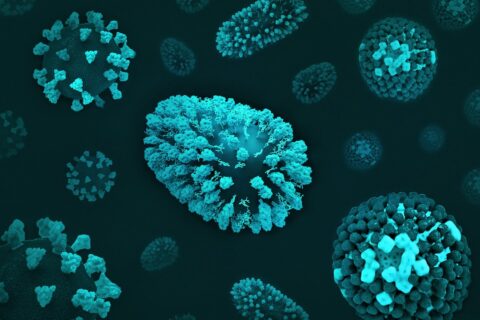Holy Cow! Is Red Meat Really That Risky?
The Link Between Red Meat Consumption and Cancer Risk
Understanding the Correlation
The consumption of red meat has been a topic of concern for its potential health risks, particularly its link to cancer. Classified by the International Agency for Research on Cancer (IARC) as Group 2A, red meat is considered probably carcinogenic to humans, with [colorectal cancer](https://www.eper. href=”https://www.who.int/news-room/questions-and-answers/item/cancer-carcinogenicity-of-the-consumption-of-red-meat-and-processed-meat”>Processed meat has been classified by the IARC as potentially carcinogenic, with significant implications for public health due to rising meat consumption globally. This is a significant finding, suggesting that eating large quantities of red meat could increase the risk of developing cancer. For example, a meta-analysis revealed that every additional 100 grams of red meat consumed daily can lead to a 17% increase in the risk of colorectal cancer. The risk is even higher with processed meats like bacon and sausages, which are classified as Group 1 carcinogens, indicating strong evidence of their cancer-causing potential.
High red meat intake is not only associated with colorectal cancer but also has links to breast cancer. The presence of heme iron and the methods used to cook red meat, such as frying or grilling, contribute to this increased risk. These cooking methods can produce harmful compounds, further exacerbating the potential for cancer. Regular consumption of red meat has been associated with a 30% increased risk of colorectal cancer.
 Differences Between Processed and Unprocessed Red Meat
Differences Between Processed and Unprocessed Red Meat
 Health Implications
Health Implications
Processed meats and unprocessed red meat differ significantly in terms of cancer risk. Processed meats contain nitrites and are preserved through methods such as curing, smoking, or salting, which increase their carcinogenic potential. Eating just 50 grams of processed meat daily can raise the risk of colon cancer by 18%. In comparison, unprocessed red meat’s cancer risk is mainly linked to cooking methods and its heme iron content.
While both processed and unprocessed red meats are linked to an increased cancer risk, the risks are more pronounced with processed meats. For instance, consuming processed meats is linked to a 21% increased risk of colon cancer, compared to a 12% increased risk associated with unprocessed red meat. This distinction is important for making informed dietary choices.
 Recommendations on Red Meat Consumption
Recommendations on Red Meat Consumption
Health Organizations’ Guidelines
Health organizations have issued guidelines to help mitigate the cancer risk associated with red meat consumption. The American Institute for Cancer Research (AICR) recommends consuming no more than 12 to 18 ounces of red meat per week and advises avoiding processed meats whenever possible. The World Health Organization (WHO) also supports moderation in processed meat consumption to reduce cancer risk.
Current dietary guidelines emphasize a balanced diet that reduces the intake of red and processed meats. Increasing the intake of fruits, vegetables, and whole grains is recommended to counteract the risks associated with red meat. These guidelines aim to promote overall health while minimizing cancer risk.
Mechanisms Behind Red Meat’s Cancer Risk
Cooking and Chemical Formation
The way red meat is cooked plays a crucial role in its cancer risk. High-temperature cooking methods, such as grilling and frying, produce heterocyclic amines and polycyclic aromatic hydrocarbons, which are linked to increased cancer risk. These compounds form when meat is cooked at high temperatures, particularly when it is charred or well-done.
Heme iron, found in red meat, also plays a role in cancer development by promoting oxidative stress and potentially contributing to tumor formation. Interestingly, marinating meat before cooking can reduce the formation of these harmful chemicals, offering a simple way to lower potential risks.
 Genetic Factors in Meat-Related Cancer Risk
Genetic Factors in Meat-Related Cancer Risk
The Role of Genetics
Genetics can influence the risk of cancer related to red meat intake. Specific genetic markers, such as HAS2 and SMAD7, have been identified as modifying factors in colorectal cancer risk associated with red meat consumption. For instance, individuals with two copies of the common SMAD7 variant face an 18% higher risk of developing cancer.
Research suggests that genetic factors may account for up to 20% of the variation in cancer risk associated with red meat consumption. This highlights the importance of considering individual genetic predispositions when evaluating dietary risks.
Red Meat Alternatives and Cancer Prevention
 Dietary Choices
Dietary Choices
To reduce cancer risk, incorporating alternatives to red meat into your diet can be beneficial. Poultry and fish are safe options not linked to cancer, while plant-based proteins offer additional health benefits. A Mediterranean diet, rich in fruits and vegetables and low in red meat, has been shown to lower cancer risks.
Incorporating legumes, nuts, and whole grains can provide essential nutrients while reducing red meat consumption. Studies also indicate that individuals who follow a plant-based diet have a lower incidence of various cancers compared to those who consume red meat. These dietary choices can support both cancer prevention and overall health.
Final Insights on Red Meat and Cancer Risk
Understanding the link between red meat consumption and cancer risk is essential for making informed dietary choices. By recognizing the differences between processed and unprocessed meats, following health organizations’ guidelines, and considering genetic factors, individuals can better manage their health risks. For further health insights and emergency medical services, visit El Paso Emergency Room at El Paso Emergency Room.


